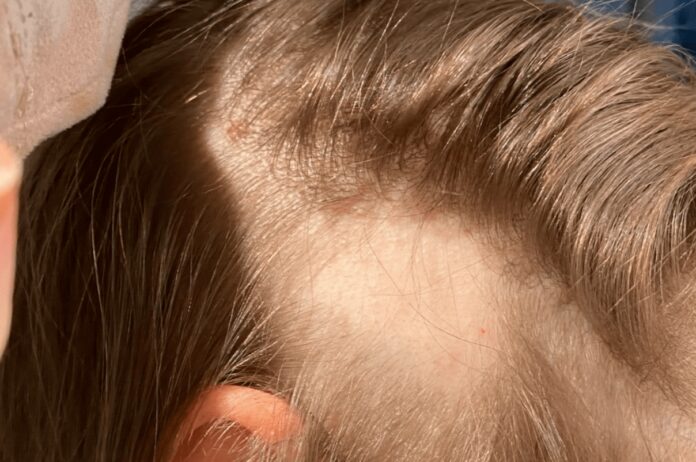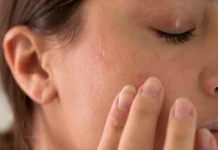For many of us, hair loss is an inevitable part of life. For some, it can be a source of tremendous stress and anxiety as they struggle to understand the causes and treatments for alopecia (hair loss).
In this article, we explore the various forms of alopecia, from genetic-based conditions like male pattern baldness to autoimmune diseases such as alopecia areata. We also examine current strategies for hair restoration – from medications that encourage new growth to non-invasive treatments that provide temporary cover-up solutions.
Join us as we delve into the science behind baldness and discover ways to battle this complex condition.
Causes of Alopecia and Hair Loss

Hair loss and alopecia are conditions that many people experience from time to time. While some hair loss is average, excessive or sudden baldness can be distressing and even debilitating.
Understanding the causes of alopecia and hair loss is essential in developing strategies to restore healthy locks. Most cases of hair loss result from a combination of genetic factors as well as environmental ones such as stress, illness, diet, hormonal changes, or medications that affect the body’s ability to maintain healthy hair growth cycles. Some medical conditions such as autoimmune diseases like lupus may cause permanent damage resulting in complete scalp baldness while other illnesses including hypothyroidism or anemia can lead to temporary shedding or thinning of the locks.
In addition, lifestyle choices like smoking, drinking alcohol excessively and crash diets have also been linked with increased risk for premature balding. Other potential culprits behind alopecia include physical trauma related to tight hairstyles which pull on the roots too tightly; certain chemical treatments; radiation therapy used for cancer treatment; exposure to toxins like arsenic found in some water supplies; excessive UV light exposure from tanning beds; contact dermatitis caused by irritating products used on the scalp; infections such as ringworm (tinea capitis) and fungal overgrowth (candidiasis).
The key to preventing further progression of these conditions starts with understanding their underlying causes so sufferers can take steps towards restoring healthier-looking locks through lifestyle modifications if needed along with proper medical intervention when appropriate.
Different Types of Alopecia
Alopecia is a common hair loss condition that affects many people. There are several different types of alopecia, each with its causes and treatments.
Here is an overview of the four most common types: Androgenetic Alopecia – Also known as male or female pattern baldness, this hereditary form of hair loss affects both men and women and usually begins in mid-adulthood. The cause is thought to be related to hormones called androgens that weaken the hair follicles over time so they can no longer produce healthy hair.
Treatment options for Androgenetic Alopecia typically involve medication such as minoxidil or finasteride, plus lifestyle changes like reducing stress levels which can worsen symptoms. Alopecia Areata – This type of alopecia occurs when your immune system mistakenly attacks your hair follicles, resulting in patchy bald spots on your head.
It’s more common in young adults but can happen at any age; it’s also thought to have a genetic component since it often runs in families. Treatment involves corticosteroid injections into affected areas, topical immunotherapy medications like diphencyprone (DPCP) or squaric acid dibutyl ester (SADBE), plus light therapy using UVB lamps or lasers if needed. Scarring Alopecias – This category includes conditions where inflammation damages the scalp enough to leave permanent scarring which blocks new hairs from growing back; some examples include lichen planus, pseudopelade (also known as Brocqs disease), and discoid lupus erythematosus (DLE).
Treatments vary depending on the underlying cause but may include steroid creams/ointments applied directly onto the scalp, oral steroids for severe cases, and surgery if necessary for more advanced stages of scarring alopecia. Telogen Effluvium – This type results from sudden shock to the body due to physical trauma or medical conditions such as pregnancy; it causes large numbers of hairs all over your head suddenly go into a resting phase leading them to fall out easily when brushing/washing etc.
, although they will eventually grow back again once you recover from whatever caused it originally. Treatment focuses on managing any underlying medical issues causing Telogen effluvium rather than trying to treat the actual condition itself; hence why prompt diagnosis is important here!
Diagnosing and Treating Alopecia

Diagnosing and Treating Alopecia is a complex process that requires extensive knowledge of the condition as well as an understanding of potential treatments. Alopecia is typically diagnosed through physical examination, blood tests, or potentially biopsy to rule out other conditions like fungal infections or skin diseases.
Treatment options vary depending on the type and severity of the alopecia but could include topical steroids, oral medications, phototherapy, wigs, hairpieces, or hair transplants. These measures are designed to slow down or stop further hair loss while restoring natural growth whenever possible.
The goal for each suffering from alopecia should be discussed with their doctor who can provide insight into which strategies will work best for them given their particular case.
Preventative Strategies for Maintaining Healthy Hair Growth

When it comes to preventing hair loss, the best defense is a good offense. Taking proactive steps such as eating a balanced diet, consuming enough water and vitamins, avoiding excessive styling products, and reducing stress can all be effective in maintaining healthy hair growth.
Good nutrition with essential nutrients including proteins, iron, and zinc is important for keeping the scalp healthy and stimulating new hair growth. Additionally, limiting exposure to direct sunlight or using protective measures like hats can help protect against damage from ultraviolet rays. Regularly washing your hair with gentle shampoos will also keep your locks clean and free of dirt that can clog follicles resulting in thinning hair.
Finally, giving yourself regular scalp massages helps increase circulation which will bring more oxygen-rich blood to nourish your strands promoting stronger growth over time.
Conclusion
Alopecia is a common condition that affects many people, but thankfully it doesn’t have to be permanent. With the right understanding of alopecia, individuals can determine the best hair restoration strategy for their particular needs and regain their confidence in no time.
Whether through medication, topical treatments, or surgery, hair restoration options offer hope for those with alopecia who want to restore their mane.




